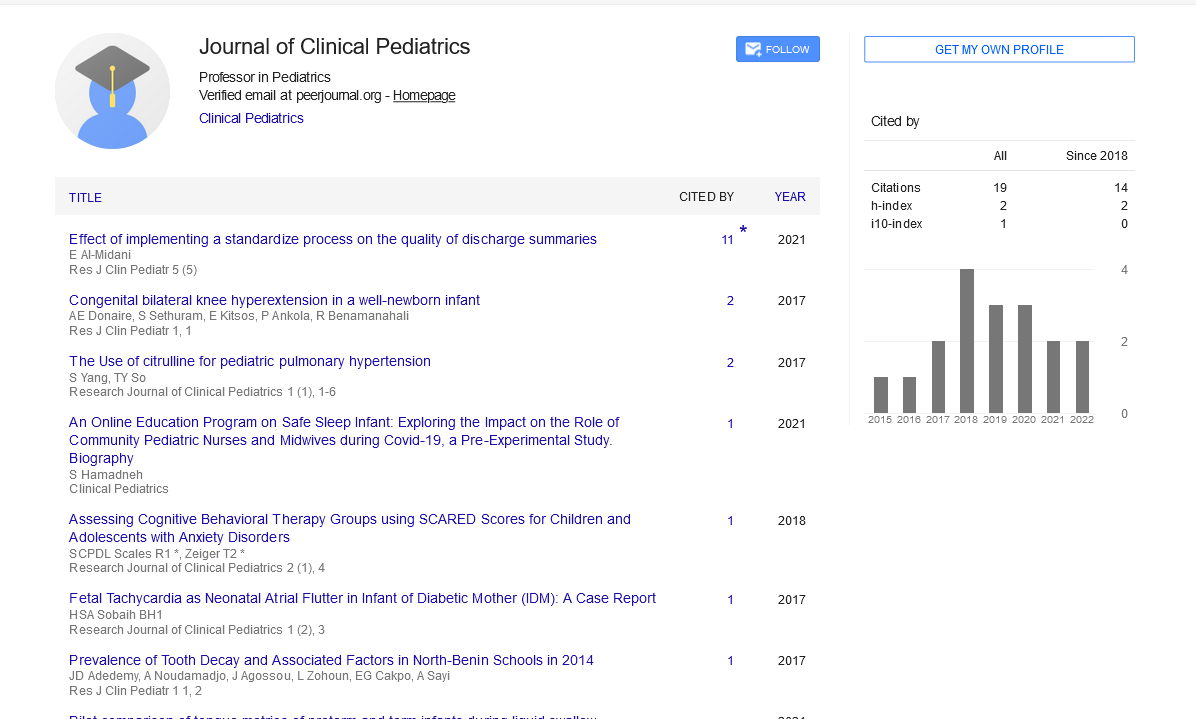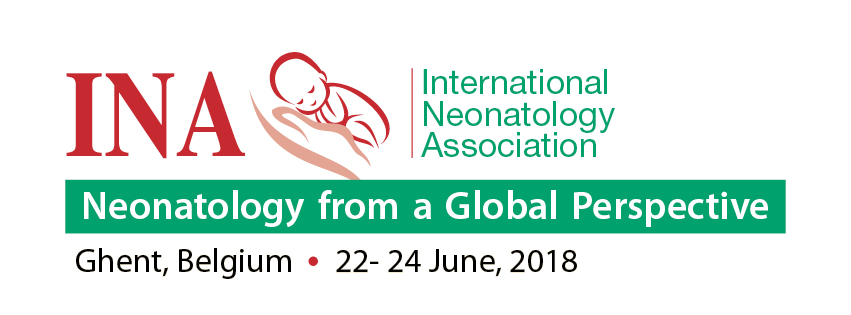Perspective, Res J Clin Pediatr Vol: 7 Issue: 1
Pediatric Pulmonary Medicine: A Comprehensive Overview
Sarah Wang*
1Department of Pediatrics, University in Vancouver, Vancouver, BC V6B 1V9, Canada
*Corresponding Author: Sarah Wang
Department of Pediatrics, University in
Vancouver, Vancouver, BC V6B 1V9, Canada;
E-mail: sarahwang@web.edu.ca
Received date: 16 February, 2023, Manuscript No. RJCP-23-96079;
Editor assigned date: 20 February, 2023, PreQC No. RJCP-23-96079 (PQ);
Reviewed date: 10 March, 2023, QC No. RJCP-23-96079;
Revised date: 17 April, 2022, Manuscript No. RJCP-23-96079 (R);
Published date: 24 April, 2023, DOI: 10.4172/Rjcp.1000139
Citation: Wang S (2023) Pediatric Pulmonary Medicine: A Comprehensive Overview. Res J Clin Pediatr 7:1.
Description
Pediatric pulmonary medicine is a specialized field of medicine that focuses on the respiratory health of children and adolescents. This manuscript provides a comprehensive overview of pediatric pulmonary medicine, including the anatomy and physiology of the respiratory system, common respiratory conditions in children, diagnostic tools, and treatment options. It highlights the importance of early diagnosis and management of respiratory conditions to improve outcomes and optimize the quality of life for children and their families.
Pediatric pulmonary medicine is a specialized field of medicine that focuses on the respiratory health of children and adolescents. Respiratory problems are common in children and can have a significant impact on their overall health and quality of life. Pediatric pulmonologists work to diagnose and treat respiratory conditions in children, from infancy through adolescence. This manuscript provides a comprehensive overview of pediatric pulmonary medicine, discussing the anatomy and physiology of the respiratory system, common respiratory conditions in children, diagnostic tools, and treatment options.
Anatomy and physiology of the respiratory system
The respiratory system is responsible for exchanging oxygen and carbon dioxide between the body and the environment. It is composed of the upper and lower respiratory tracts. The upper respiratory tract includes the nose, mouth, pharynx, and larynx. The lower respiratory tract includes the trachea, bronchi, bronchioles, and alveoli. The lungs are the primary organs of the respiratory system, and they are responsible for gas exchange. The diaphragm is the main muscle responsible for breathing, and it contracts and relaxes to move air in and out of the lungs.
Common respiratory conditions in children
Pediatric pulmonologists diagnose and treat a wide range of respiratory conditions in children. Some of the most common respiratory conditions in children include asthma, cystic fibrosis, bronchitis, pneumonia, and sleep-disordered breathing. Asthma is a chronic condition characterized by inflammation of the airways, which can lead to wheezing, coughing, and difficulty breathing. Cystic fibrosis is a genetic disorder that affects the lungs, pancreas, and other organs, causing thick, sticky mucus to build up in the airways. Bronchitis and pneumonia are infections that can affect the lungs and cause symptoms such as coughing, fever, and difficulty breathing. Sleep-disordered breathing includes conditions such as sleep apnea, in which breathing is interrupted during sleep, leading to snoring, gasping, and interrupted sleep.
Diagnostic tools
Pediatric pulmonologists use a variety of tools to diagnose respiratory conditions in children. These may include imaging tests such as X-rays and CT scans, lung function tests such as spirometry, and bronchoscopy, which involves inserting a thin, flexible tube into the airways to visualize and sample lung tissue. Pulmonary function testing is an important tool used to evaluate lung function, and it can help diagnose conditions such as asthma, cystic fibrosis, and sleepdisordered breathing.
Treatment options
Treatment options for respiratory conditions in children vary depending on the specific condition and its severity. In general, treatment may involve medications such as bronchodilators, corticosteroids, and antibiotics. Pulmonary rehabilitation, which includes breathing exercises and physical therapy, may also be recommended to improve lung function and overall health. For some conditions, such as sleep apnea or cystic fibrosis, Continuous Positive Airway Pressure (CPAP) or other forms of mechanical ventilation may be required. In severe cases, surgery may be necessary to repair or remove damaged lung tissue.
Conclusion
Pediatric pulmonary medicine is a specialized field of medicine that focuses on the respiratory health of children and adolescents. Respiratory conditions can have a significant impact on the overall health and quality of life of children, and early diagnosis and management.
 Spanish
Spanish  Chinese
Chinese  Russian
Russian  German
German  French
French  Japanese
Japanese  Portuguese
Portuguese  Hindi
Hindi 
